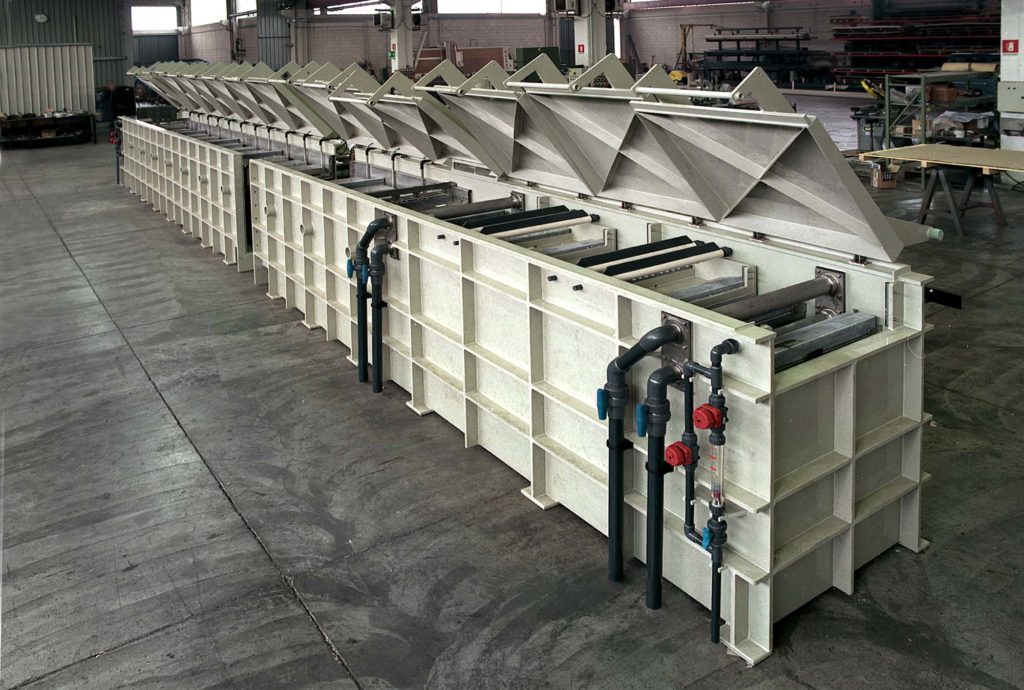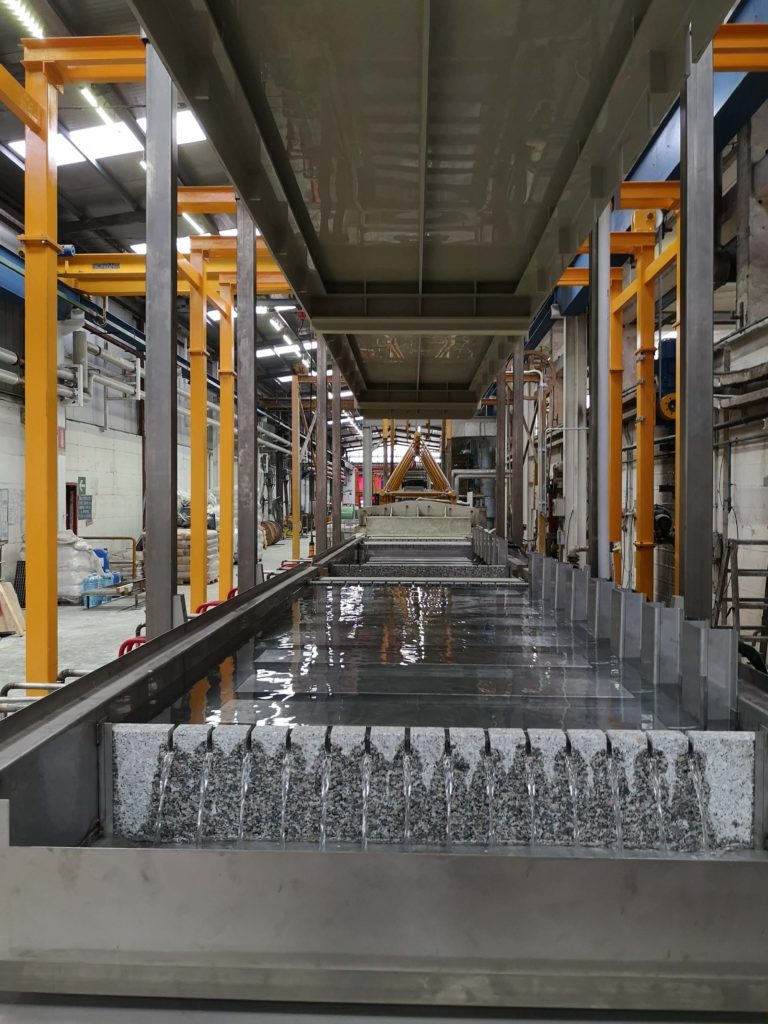Single wire and multiwire electrolytic pickling plants
Single wire and multiwire plants for degreasing in hot water, electrolytic degreasing, ultrasonic degreasing
Single wire and multiwire plants for electrolytic phosphating
Single wire and multiwire plants for degreasing in hot water, electrolytic degreasing, ultrasonic degreasing
Electrolytic degreasing of copper wire upstream an electrolytic plating vessel (tinning, nickel plating, etc.)
Electrolytic degreasing of steel wire upstream an electrolytic plating vessel (zincking, nickel plating, coppering, etc.)
Ultrasonic degreasing of steel wire upstream an plating plant, as for example, a hot dip zincking furnace
Degreasing in (hot) water of steel wire upstream a patenting of annealing furnace
Degreasing commonly means of removing from the wire surface lubricants used during the previous processing of the wire, say grease, oil or stearates. There are different degreasing technologies; the choice depends on the nature of the “grease” to be removed and the requested degree of cleanliness. Some processes as, for example, electrolytic plating, requires a perfectly clean initial surface; therefor the degreasing of copper or steel wire upstream an electrolytic process (tinning, or nickel plating, or zincking) is done in an electrolytic bath (electrolytic degreasing). The ultrasonic degreasing is a well proven method of cleaning; for instance it is commonly used to prepare the wire to the hot dipping galvanizing. The continuous heat treatment of wire occurs commonly with the wire surface being rather clean; before entering the furnace the wire undergoes a degreasing in a water bath (degreasing in water). The water may be hot or cold, depending on the type of the next process. Annealing or inductive patenting, or patenting in a lead bath may require different degrees of cleanliness. Consequently, they requires different degrees of degreasing efficiency, or, in other words, different temperatures of the degreasing water.

